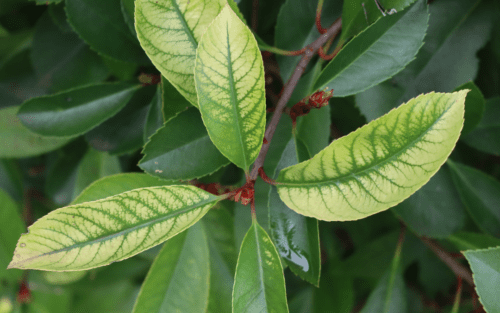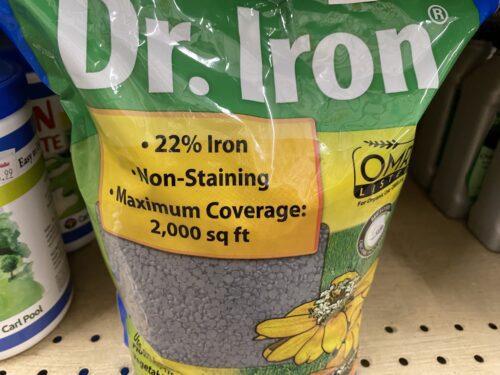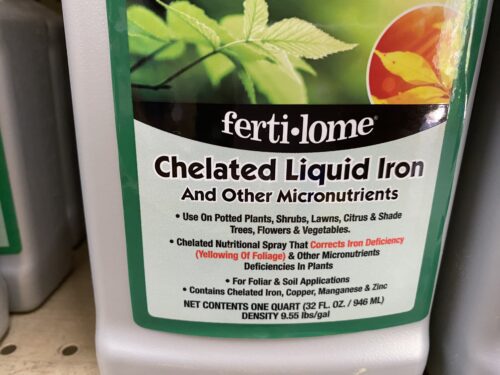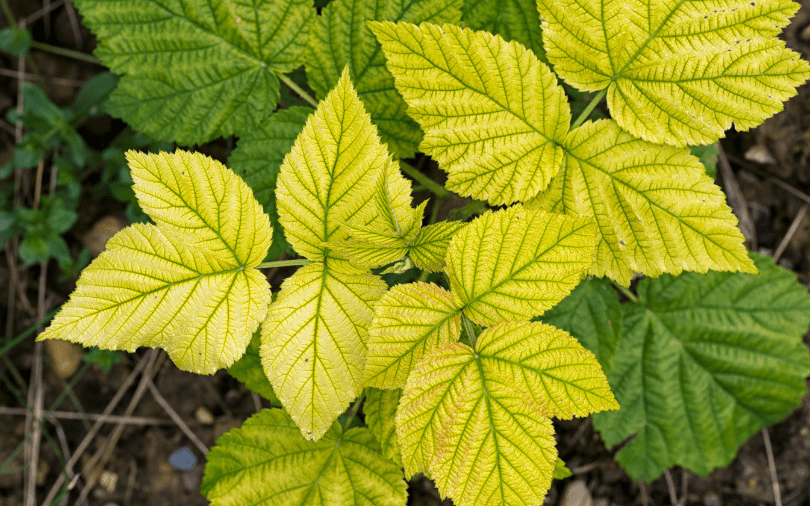Let’s dive into the fascinating world of plant care and tackle the issue of chlorosis, a plant ailment that can make your lush green garden look like a patch of yellow despair. If you’ve ever wondered why your once-vibrant plants are turning yellow, then this blog is might be for you, and an iron supplement may be what you need.

First, let’s understand what chlorosis is. Chlorosis is a condition where leaves produce insufficient chlorophyll, the pigment responsible for that rich green color. Without enough chlorophyll, plants can’t photosynthesize efficiently, leading to yellowing leaves and stunted growth.
This condition can be caused by a variety of factors, including nutrient deficiencies, poor soil drainage, root damage, exuberant amounts of rainfall (not likely during our summers, right?), or even compacted roots. Hot dry weather doesn’t necessarily cause the condition of chlorosis, but it definitely exacerbates it.
Now, why is iron such a big deal in this scenario? Iron is a critical micronutrient that plants need to produce chlorophyll. Without adequate iron, plants can’t synthesize chlorophyll effectively, leading to the dreaded yellowing. Enter Dr. Iron and chelated iron, the superheroes your garden needs.

What Do Iron Products Do for Chlorosis?
Dr. Iron, also known as ferrous sulfate, is a readily available supplement that can address iron deficiencies. It’s particularly useful for turf, providing a solution that can green up your lawn in a few weeks, and it is long lasting. However, it’s not always the most stable form of iron in the soil, especially if your soil pH is high. High pH soils can lock up iron, making it unavailable to plants despite being present in the soil. You might want to do a pH soil test to know for sure.
Chelated iron is iron that’s been combined with a chelating agent, which helps keep it soluble and available for plant uptake even in higher pH soils. Think of it as being wrapped in a protective jacket, safeguarding it from conditions that would otherwise render it useless. Chelated iron is especially beneficial for garden plants and ornamental shrubs that need a consistent and prolonged supply of iron.

Tips for Using Iron Products
Using these supplements can make a significant difference in the health and appearance of your plants and turf. Here are a few tips on how to use them effectively:
- Soil Testing: Before applying any iron supplement, it’s a good idea to test your soil. This will help you determine the pH and existing nutrient levels, ensuring you choose the right product and application rate.
- Proper Application: For Dr. Iron, follow the recommended dosage on the package. It’s usually applied directly to the soil and watered in. For chelated iron, you can find both soil-applied and foliar spray options, giving you flexibility based on your plant’s needs.
- Monitor and Adjust: After application, keep an eye on your plants. You should see improvement within a few weeks. If chlorosis persists, you may need to adjust your approach or consider other underlying issues.
- Combine with Good Practices: Iron supplements work best when combined with good gardening practices. Ensure proper watering, avoid root damage, and maintain healthy soil with organic matter to support overall plant health.
So, the next time you see those yellow leaves creeping into your garden, remember that a little iron might be all you need to bring back that lush green glory.
~The Happy Gardener, Lisa Mulroy

